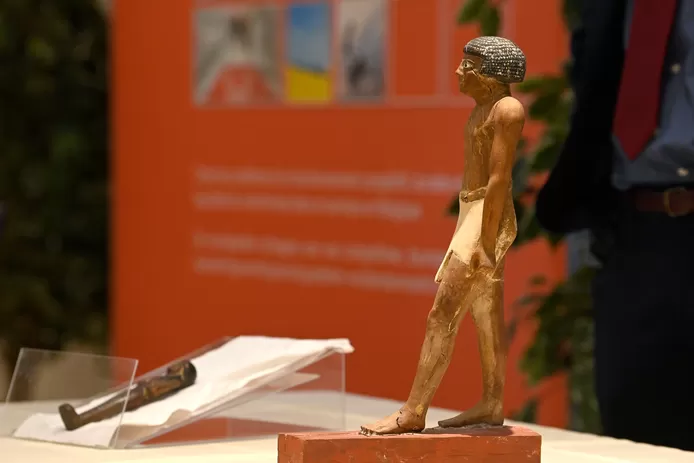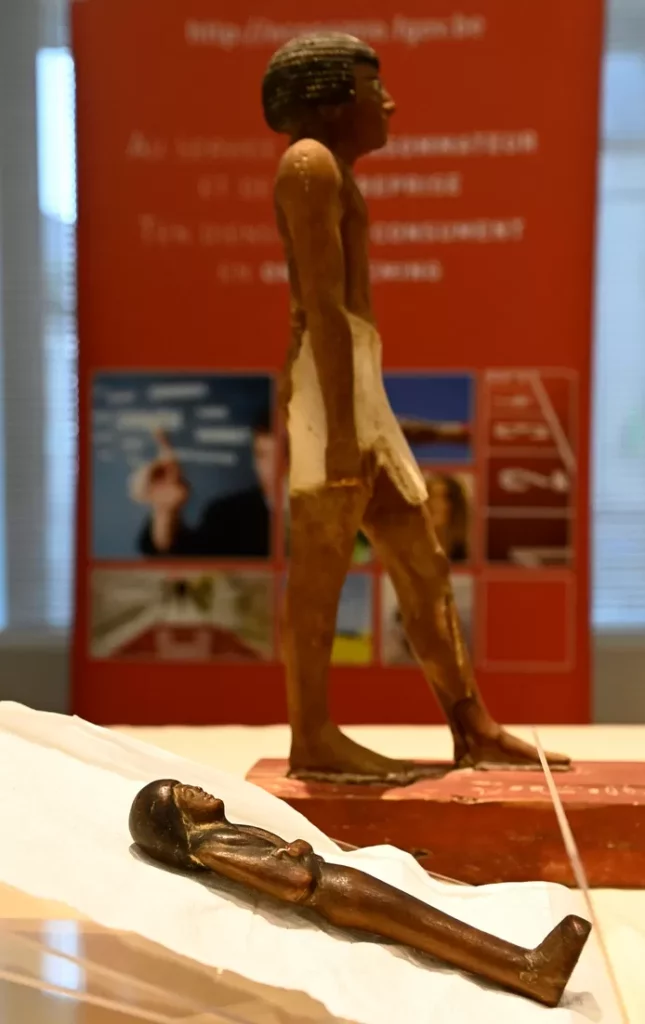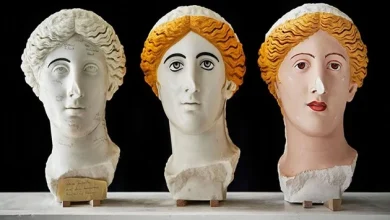Belgium returns two looted statuettes to Egypt

It concerns a so-called ‘ushabti’, a grave statue, and a statue of a standing man. The Belgium Federal Public Service Economy, in the presence of the Federal Economy Minister of Pierre-Yves Dermagne (PS), returned two looted artifacts to the Egyptian authorities on Thursday. Egyptian Ambassador Khaled El Bakly received the documents.
The artifacts were displayed in a Brussels antique gallery and seized after an Interpol alert from the Italian carabinieri. After all, the pieces came from an illegal excavation in Giza in 2015. The Egyptian Republic was informed and requested its historical heritage back.
The Directorate-General for Economic Inspection of the FPS Economy investigated the case under the direction of the Brussels public prosecutor, but was unable to identify the rightful owner of the figurines. Therefore, they are handed over to the Egyptian government.
Afterlife
The ushabti is a painted wooden statue of seventeen centimeters high. An ushabti is a small servant who is placed in the grave to help the deceased with tasks in the afterlife. Therefore, an ushabti often carries small implements and a chapter from the ‘Book of the Dead’, which instructs the servant to obey the dead.
Given the hairstyle of the figure, which presumably depicts a woman, and the style of the funerary statue, the ushabti probably dates from the Ramessid period, situated in the nineteenth or twentieth dynasty of the New Kingdom (1539 to 1077 BC).
Remarkable quality
The 43 cm high statue of the standing man consists of wood and a loincloth, both plastered and painted. The figure extends his left leg and holds his arms at his sides. Hieroglyphs are written on the pedestal. Such figurines also ended up in graves close to the coffin containing the mummy.

Compared to similar grave statues, the piece is of remarkable quality. Presumably, it belonged to a dignitary. The loincloth and style of the figurine are characteristic of the early Middle Kingdom (1980 to 1760 BC).




